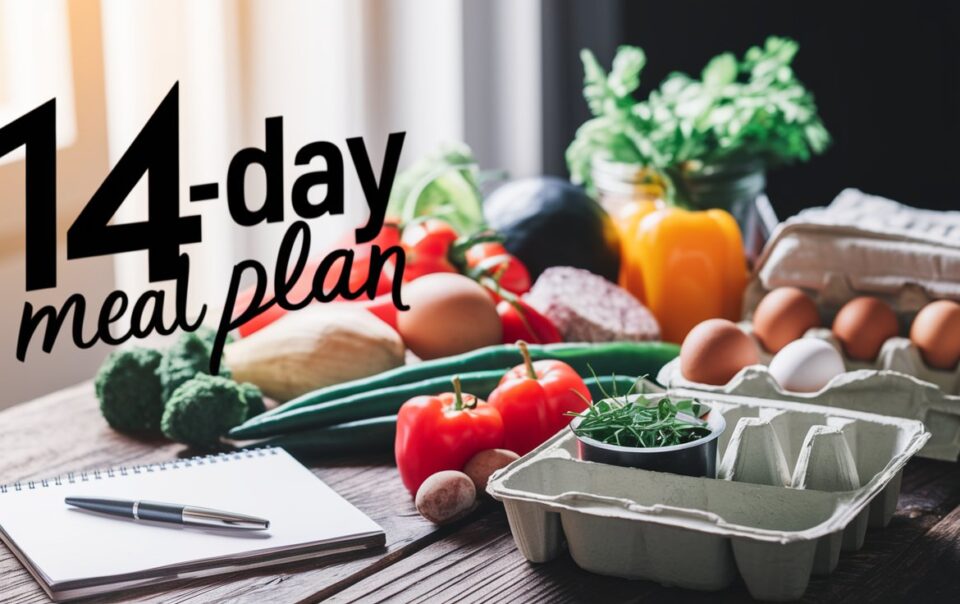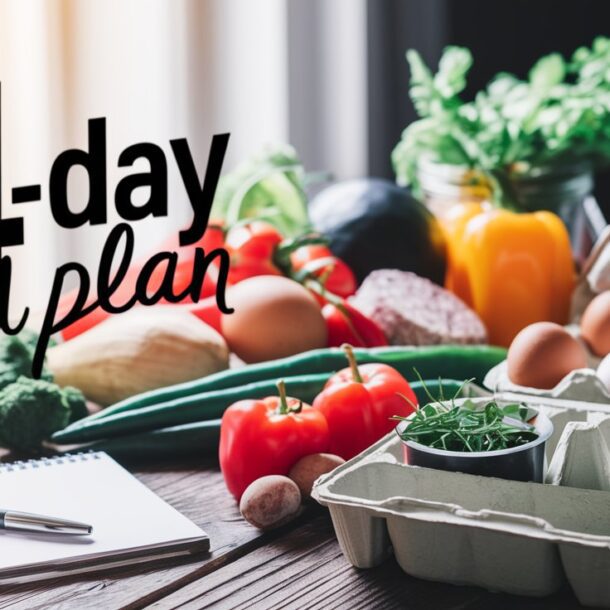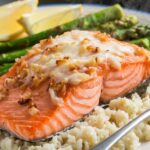
Please note: This website contains affiliate links. As an Amazon Associate, we earn from qualifying purchases at no additional cost to you.
Imagine pressing the reset button on your relationship with food.
That’s the promise of the Whole30 diet—a 30-day experiment that could change the way you eat, feel, and think about nutrition.
But is it worth the hype? Let’s dive into the nitty-gritty of Whole30, so you can decide if this structured plan is your next health adventure.
We’ll Cover:
- What Exactly is the Whole30 Diet?
- Why Do People Go on this Diet?
- What Can You Expect (i.e. How will you feel)
- How to Get Started
- Potential Benefits
- Foods to Eat and Avoid on Whole30 Plan
- 7-Day Sample Whole30 Meal Plan
- Diet Rules and Guidelines
- Potential Downsides
- Is this Diet a Good Fit for You?
- FAQs
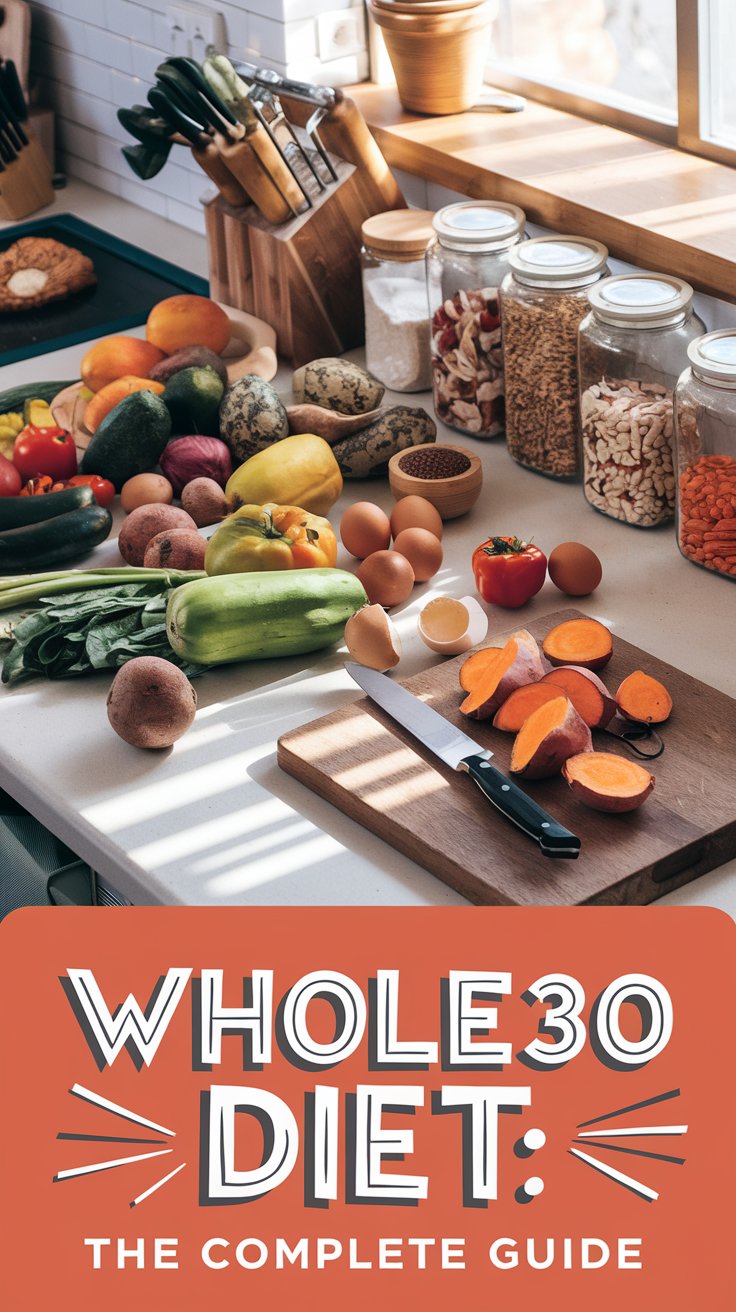
What Exactly is the Whole30 Diet?
The Whole30 diet is more than a passing health trend—it’s a 30-day elimination diet designed to transform your relationship with food. Created by Melissa Hartwig Urban, the Whole30 challenges you to ditch sugar, grains, dairy, alcohol, and processed foods for an entire month. The goal? To reset your body, uncover food sensitivities, and develop a healthier approach to eating.
At its core, Whole30 is about breaking free from unhealthy eating habits, identifying how certain foods impact your physical and mental health, and discovering what works best for your body.
It’s like hitting the “refresh” button on your diet, but without any shortcuts or cheat days.
Why Do People Go on the Whole30 Diet?
People turn to Whole30 for a variety of reasons, from improving their health to gaining insight into their eating patterns. Here are some of the most common motivations:
- Uncover Food Sensitivities:
Whole30 eliminates common irritants like gluten, dairy, and sugar, helping you identify which foods may be causing bloating, skin issues, fatigue, or digestive discomfort. - Break Unhealthy Habits:
If you’ve ever reached for chips out of boredom or indulged in a sugary treat after a stressful day, Whole30 offers a chance to break those automatic behaviors and replace them with more mindful eating habits. - Improve Overall Health:
Many followers report reduced inflammation, better digestion, clearer skin, and improved energy levels after completing the program. - Mental Clarity:
By removing processed foods and sugar, some people experience a clearer mind, better focus, and fewer mood swings. - Weight Loss (As a Bonus):
While Whole30 isn’t a weight-loss-focused plan, some people naturally shed pounds due to cutting out calorie-dense processed foods.
What Can You Expect While You’re on the Diet?
Starting Whole30 can feel like stepping into uncharted territory, but knowing what to expect can make the journey smoother.
- The First Few Days: Detox Mode
Be prepared for the first week to feel a little rocky. As your body adjusts to cutting out sugar and processed foods, you might experience cravings, fatigue, or irritability (fondly referred to as the “carb flu”). Don’t worry—this is temporary. - The Midway Point: Energy Boosts and Wins
By week two, most people notice improvements in energy levels, digestion, and even sleep quality. Meals become second nature, and you start reaping the rewards of eating whole, nutrient-dense foods. - The Finish Line: Feeling Amazing
By the end of the 30 days, you may feel like a whole new person—energized, clear-headed, and in control of your eating habits. Plus, you’ll have a better understanding of how food affects your body. - The Reintroduction Phase
Once you’ve completed the Whole30, the reintroduction phase is where the real magic happens. Slowly adding back eliminated foods one at a time helps you pinpoint any culprits causing issues, giving you valuable insights for a personalized, long-term eating plan.
How to Start the Whole30 Diet
Starting Whole30 is like gearing up for a road trip: you need a map, a packed bag, and the right mindset.
- Do Your Homework: Read the official Whole30 rules so you know what’s in and what’s out.
- Clear Your Kitchen: Remove any off-plan foods that could tempt you. Goodbye, cookies—hello, pantry makeover!
- Plan Your Meals: Meal prep is your best friend. Whole30-approved recipes and snacks will save you from hanger-induced meltdowns.
- Tell Your People: Let friends and family know about your 30-day commitment. That way, no one will be offended when you pass on the birthday cake.
Possible Benefits of the Whole30 Diet
- Reduced Cravings: By cutting sugar and processed foods, you may break free from constant snack attacks.
- Improved Digestion: Many followers report less bloating and better gut health.
- More Energy: Whole, nutrient-dense foods can give you a serious energy boost.
- Food Awareness: After 30 days, you’ll have a clearer understanding of how certain foods affect your body.
Whole30 Foods + Meal Plans
Foods to Eat on Whole30 Plan
- Proteins: Meat, poultry, seafood, and eggs.
- Vegetables: Anything that isn’t starchy and fits within the guidelines.
- Fruits: Keep it minimal—think apples, berries, and bananas.
- Healthy Fats: Avocados, olive oil, nuts, and seeds.
- Herbs & Spices: To keep your meals flavorful and far from boring.
Whole30 Foods to Avoid
- Sugar: This includes honey, maple syrup, and artificial sweeteners.
- Dairy: Milk, cheese, yogurt, and all their creamy cousins.
- Grains: Say goodbye to rice, quinoa, wheat, and oats.
- Legumes: No beans, lentils, or peanuts (sorry, peanut butter lovers).
- Alcohol: Even if it’s “just one glass,” it’s a no-go.
7-Day Sample Meal Plan / Menu
Day 1:
- Breakfast: Scrambled eggs with spinach and avocado.
- Lunch: Grilled chicken salad with olive oil and lemon dressing.
- Dinner: Pan-seared salmon with roasted Brussels sprouts.
Day 2:
- Breakfast: Sweet potato hash with eggs.
- Lunch: Turkey lettuce wraps with guacamole.
- Dinner: Beef stir-fry with cauliflower rice.
Day 3:
- Breakfast: Hard-boiled eggs and mixed berries.
- Lunch: Tuna salad over arugula.
- Dinner: Pork chops with sautéed green beans.
(And so on—repeat variations of these meals for simplicity.)
Whole30 Snack Ideas
- Hard-boiled eggs
- Veggie sticks with guacamole
- Apple slices with almond butter
- Beef jerky (check the label for Whole30 compliance)
- Handful of raw nuts or seeds
Quick Summary of the Whole30 Diet Rules
- No Cheating, No Exceptions
- If you slip up and eat a non-compliant food (even just a bite), the rules state that you must start over from Day 1. The program is designed to be followed for 30 consecutive days to get the full benefits.
- Avoid All Added Sweeteners
- This includes natural sweeteners like honey, maple syrup, agave, and stevia, as well as artificial sweeteners such as aspartame or sucralose. Even foods labeled as “sugar-free” are often off-limits due to hidden sweeteners.
- No “Recreating” Baked Goods or Junk Food
- Whole30 frowns upon making “compliant” versions of non-compliant treats like pancakes, pizza crust, or brownies—even if you use approved ingredients. The idea is to break emotional dependencies on those foods.
- No Scale or Body Measurements
- During the 30 days, you’re encouraged to focus on how you feel, not on the numbers. Put away the scale and resist the urge to weigh yourself or take body measurements until the program is complete.
- No Alcohol
- This includes drinking alcohol and using it in cooking. (Yes, even wine for deglazing pans is a no-go!)
- Don’t Overeat Compliant Foods
- While foods like nuts, avocados, and coconut milk are allowed, the program encourages eating them in moderation. Whole30 is about finding balance and avoiding the tendency to overindulge, even on healthy foods.
- Read Labels Religiously
- Many packaged foods have hidden ingredients like sugar, soy, or dairy. Checking the labels ensures that everything you’re eating aligns with the Whole30 guidelines.
- No Legumes, Including Peanut Butter
- Legumes like chickpeas, lentils, black beans, and peanuts are out. However, green beans, snow peas, and sugar snap peas are exceptions because they are more “pod” than legume.
- Ghee and Clarified Butter Are Okay
- While dairy is generally off-limits, ghee and clarified butter (butter with the milk solids removed) are allowed. It’s a great way to add richness to meals while staying compliant.
- Be Prepared for Social Challenges
- Whole30 strongly encourages planning ahead for social events, dining out, or family gatherings. You’ll need to be ready to explain your choices or bring your own food to stay compliant.
Why the Strict Rules?
Whole30’s strict rules aren’t just for the sake of discipline. The program is designed to eliminate potential inflammatory foods completely so that you can truly reset your body and identify how different ingredients affect your health. Even a small deviation could mask your results, which is why the rules are non-negotiable.
The Reintroduction Phase After 30 Days
When your 30 days are up, the fun begins: reintroducing off-plan foods one at a time. This is where you figure out which foods make you feel amazing and which ones leave you feeling less-than-stellar.
Reintroduce one group at a time (like dairy or grains) and track how your body reacts.
Potential Downsides of This Diet
- Restrictive: Cutting out entire food groups can feel daunting.
- Social Challenges: Dining out or attending events can be tricky.
- Time-Intensive: Meal prepping takes effort, and grabbing convenience foods isn’t an option.
- Not Sustainable Long-Term: Whole30 is designed as a short-term reset, not a forever diet.
Is the Whole30 Diet a Good Fit for You?
Whole30 works best for people looking to reset their eating habits, identify food sensitivities, or break free from processed food addiction.
However, it may not be ideal if you’re seeking a long-term eating style or struggle with overly restrictive diets.
FAQs About the Whole30 Diet
1. What makes the Whole30 diet different from other diets?
Whole30 isn’t about weight loss or calorie counting—it’s about resetting your body and your relationship with food. Unlike other diets, it eliminates specific food groups entirely for 30 days to help identify sensitivities and improve overall health.
2. Can I have coffee on Whole30?
Yes! Coffee is allowed, but skip the sugar, creamers, and flavored syrups. Instead, opt for black coffee or add unsweetened almond or coconut milk if you need a splash of something creamy.
3. Is the Whole30 diet safe for everyone?
Most people can safely follow Whole30, but if you have specific medical conditions (like diabetes) or dietary restrictions, consult your doctor or a registered dietitian before starting.
4. Do I have to restart if I make a mistake?
Technically, yes. Whole30’s rules require you to restart from Day 1 if you eat a non-compliant food. This strict approach ensures you get the full benefits of the reset.
5. Can I eat out on Whole30?
It’s possible, but tricky. Stick to simple, unprocessed dishes like grilled meat or fish with plain veggies. Always ask about preparation methods and avoid sauces, dressings, or hidden ingredients that may not be compliant.
6. Are snacks allowed on Whole30?
Yes, but snacking isn’t encouraged. Whole30 promotes eating satisfying meals to reduce the need for snacks. If you do snack, choose compliant options like hard-boiled eggs, veggies with guacamole, or a handful of nuts.
7. Do I need to track calories or macronutrients?
Nope! Whole30 is about food quality, not quantity. You don’t need to track calories, macros, or portion sizes. Eat until you’re satisfied and focus on whole, nutrient-dense foods.
8. Can I drink alcohol on Whole30?
No, alcohol is completely off-limits during the 30 days—even for cooking. This includes wine, beer, spirits, and any other form of alcohol.
9. How do I handle cravings on Whole30?
Cravings, especially for sugar and carbs, are common at first. Combat them by eating enough protein and healthy fats at meals, staying hydrated, and distracting yourself with activities like a walk or reading.
10. What happens after the 30 days?
After Whole30, you’ll enter the reintroduction phase, where you add eliminated food groups back one at a time. This helps you pinpoint which foods make you feel great and which ones may cause issues.
11. Can I follow Whole30 longer than 30 days?
Whole30 is designed as a short-term reset, not a permanent diet. However, some people adopt a “Whole30-ish” lifestyle by sticking to the basics and occasionally indulging in non-compliant foods.
12. Is Whole30 expensive?
It can be more expensive than a typical diet because you’re focusing on whole, high-quality foods. However, meal planning, buying in bulk, and focusing on seasonal produce can help reduce costs.
13. Are there any specific recipes or cookbooks I should us?
You can find quite a few recipes and meal plan ideas online, but if you want to learn directly from the creator of the Whole30 Diet (Melissa Hartwig Urban), her books and cookbooks are available on Amazon:
- Whole30: The 30-Day Guide to Total Health and Food Freedom
- The New Whole30: The Definitive Plan to Transform Your Health, Habits, and Relationship with Food (updated in 2024)
- The Whole30 Fast & Easy Cookbook
- The Whole30 Slow Cooker Cookbook – 150 Recipes
- TheWhole30 Friends & Family: 150 Recipes for Every Social Occasion
Final Thoughts
The Whole30 diet is like a 30-day boot camp for your eating habits: challenging but potentially life-changing. By focusing on whole, nutrient-dense foods and eliminating common triggers, you can uncover a wealth of information about your body. Whether you’re here for the reset or just curious about the hype, Whole30 is an experiment worth trying at least once. And who knows? Those 30 days might just change how you think about food forever.
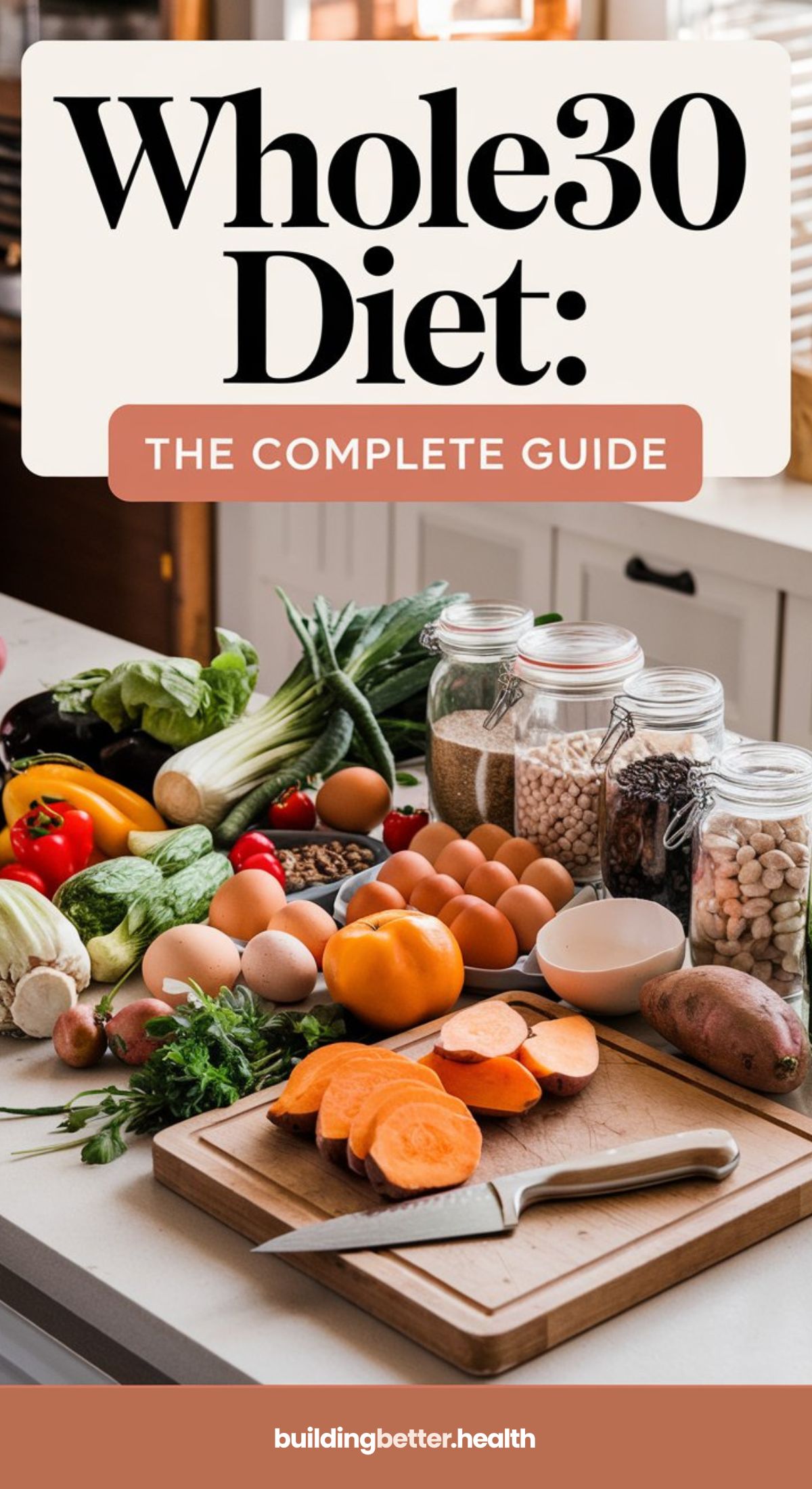
Please note: This website contains affiliate links. As an Amazon Associate, we earn from qualifying purchases at no additional cost to you.


